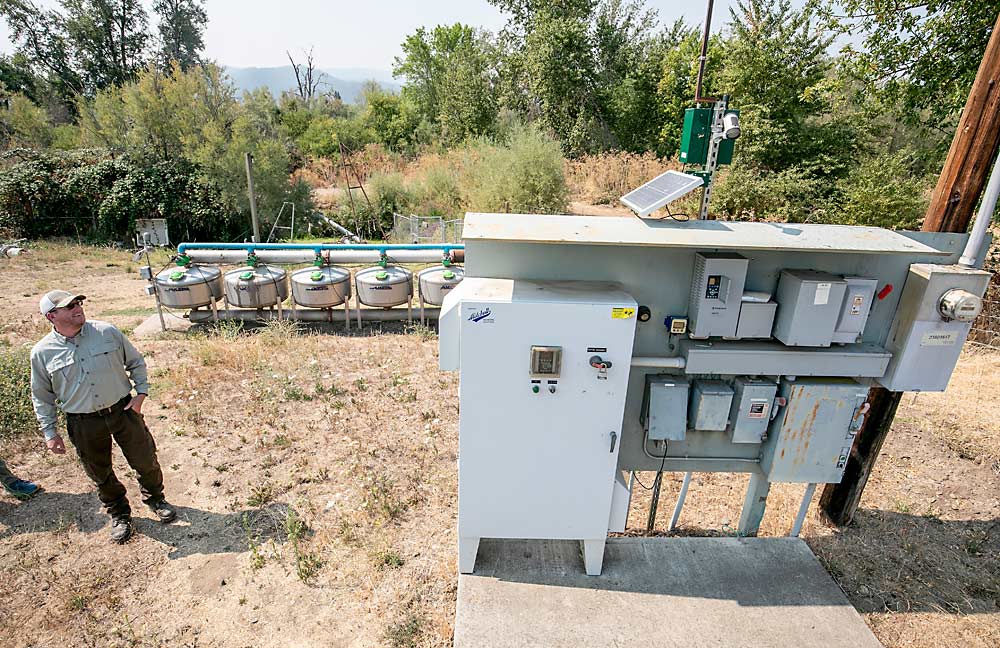
Can you grow a pear in the arid Northwest with only 35 days of irrigation water?
That was the seemingly impossible situation facing Medford, Oregon-area growers and irrigation district operators during last season’s drought, which came on the heels of a 2021 season that saw canals go dry in mid-July. But one grower’s investment in precision irrigation helped the entire region determine the best path forward.
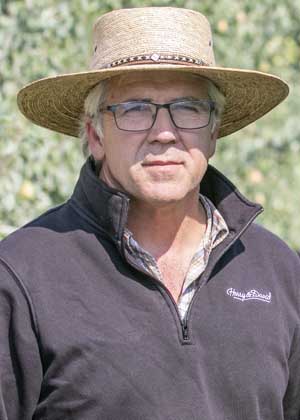
“Sitting there in March and hearing that we had 35 days’ worth of water in storage and thinking, ‘How do we plan to do better than the year before?’ … It was really difficult,” said Matt Borman, vice president of orchard operations for Harry & David, one of the region’s largest pear producers. Looking back over his soil moisture data from 2021, he saw that another week or so of water could have been enough to get more fruit across the finish line.
So, Borman teamed up with Oregon State University scientists to share the soil moisture data from his orchards around the valley and develop an outlook for 2022.
OSU viticulturist Alec Levin, agronomist Gordon Jones and postdoctoral researcher Suraj Kar used weather station data and Harry & David’s data to build a worst-case scenario forecast for the season. “Everything was pointing to, like, we’re already two weeks ahead of last year, worst-case scenario,” he said. “And then we got a wet May.”
Levin’s analysis gave the region’s three irrigation districts and their growers the confidence to delay the start of the irrigation season.
“We got the same amount of (irrigation) water that we had last year. But we got it starting in July,” Levin said. That made a significant difference for fall harvests of pears and grapes, while the wet spring helped hay growers get their first cutting in.
Borman credits the luck of the wet spring, the soil moisture data showing that irrigation could wait, and his precision irrigation systems with getting through the tough year.
“The only reason we’re being as successful as we are, and we’re not fully successful, is because the systems are automated,” he said.
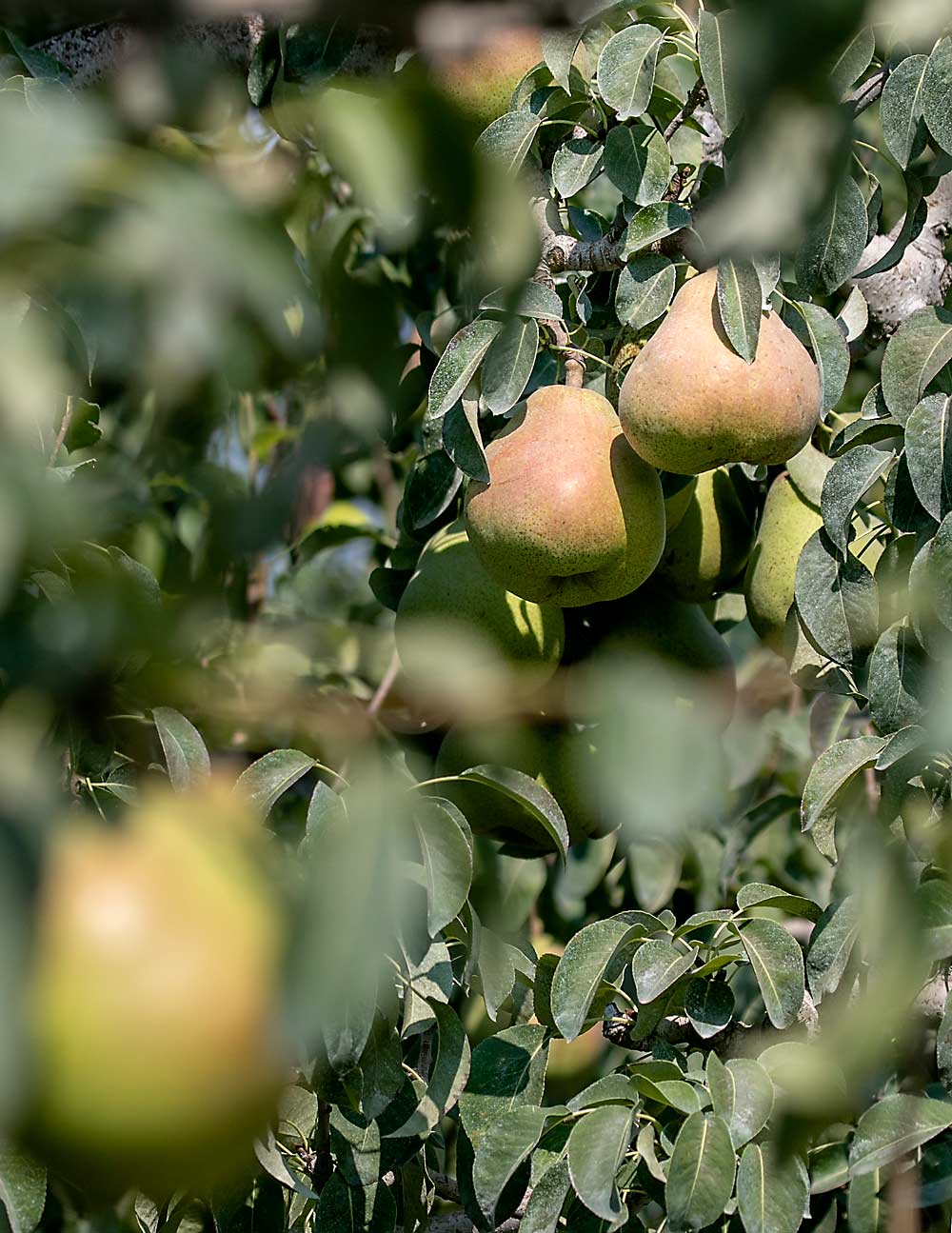
The automation advantage
In 2014, Borman began to overhaul Harry & David’s approach to irrigation for its 1,500 acres of Comice, scattered across 20 farms in the Rogue River Valley, all with different soils and microclimates.
The effort started with new plantings, which were installed with under-tree sprinklers and drip in some cases instead of the traditional overheads; then the company expanded the automation program across older blocks as well. The old trees, accustomed to long sets, didn’t seem to mind the shift to the shorter, more frequent sets that automation enables, Borman said.
At one ranch, located along Bear Creek, Josh Minchow, Harry & David’s lead on orchard development, and Edgar Escobar, then the company’s systems specialist, gave Good Fruit Grower a tour of the irrigation setup.
It starts along the creek, where they pump the water the irrigation district delivers via the creek, using a variable frequency drive pump and automation technology from California-based Ranch Systems.
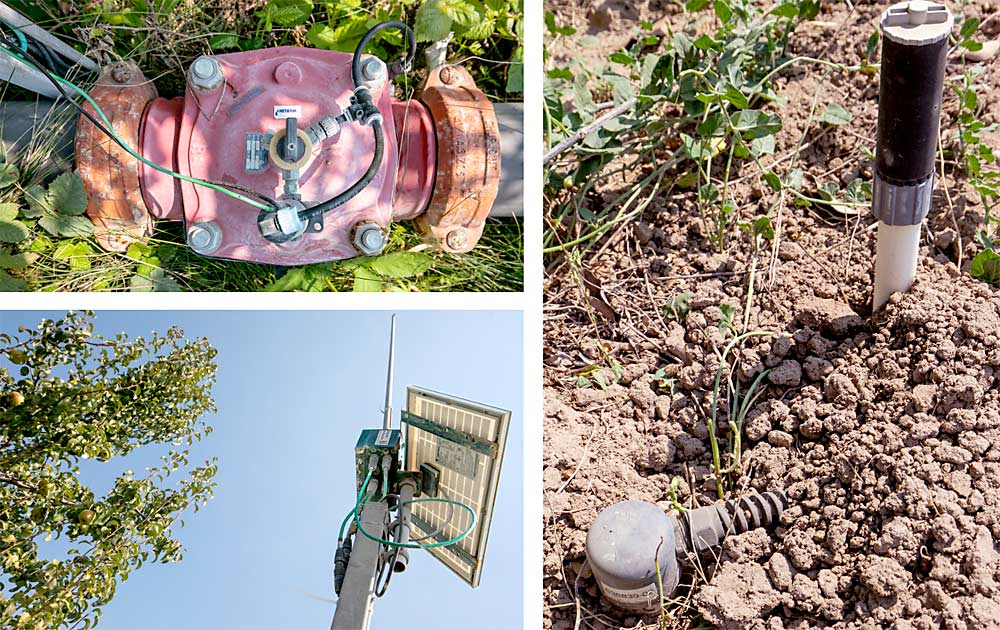
Variable frequency pumping is expensive but can manage the difference between “full blast and a metered response,” Borman said. “If I have a system that’s on or off and a water delivery that is half of what’s normal, all of a sudden I don’t have a pump that can actually manage that light flow,” he said. “Whereas with a variable frequency pump I can at least be putting out a little bit of water when it’s available.”
A tall antenna can transmit via shortwave radio from the Ranch Systems base station at the creek to 26 nodes, one in each block, over a mile across the orchard. The base station transmits the data across the cell network to key personnel’s cellphones and computers back at the office, where Escobar made the irrigation plans.
“The amazing technology that we have to create those programs, along with soil moisture sensors and stem water potential readings, give us tools to make those decisions daily or weekly,” Escobar said.
It also reduces labor demands. Now, instead of running two shifts of irrigators every day, “we can irrigate 24 hours a day, seven days a week, with very little human interface,” Minchow said. The irrigators are now checking sprinklers, performing maintenance and ensuring things are running smoothly.
Running shorter sets meant that on the first day the canal opened in July, Harry & David got every block a few hours of water, Borman said. Under the previous rotation approach, some orchards might have had to wait almost an additional week to get their first drink.
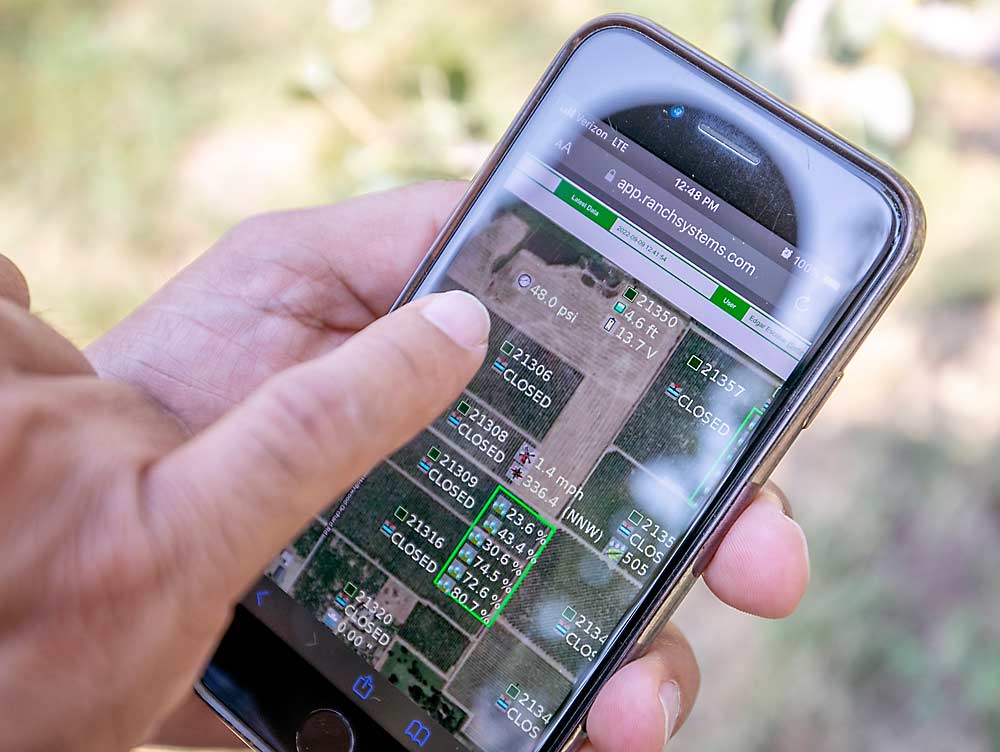
Efficiency or resiliency
Years before the recent water stress worries, Harry & David experimented with irrigating a young block with only drip. Borman liked the idea of the efficiency and the fertigation, and as the trees grew, he liked what he saw.
“What we noticed was that these trees were better balanced, and they were using water more effectively, and we were getting into production faster,” he said. It was so promising, they converted two more young blocks, all planted in 2014, to drip.
But 2021 and 2022 found those drip-irrigated trees far more stressed by the drought conditions, presumably because they never had a reason to develop a more robust, wide-reaching root system. A neighboring block, planted at the same time on the same quince rootstock and receiving the same limited irrigation but instead via a sprinkler system, looked much better and would have been harvestable had hail not hit.
Thus, the conundrum for Borman when he thinks about the future: Investing in efficiencies like drip irrigation only works if water remains accessible on demand, something the region’s irrigation systems can’t always deliver.
“A more efficient system may put you at risk in short years,” he said. “Right now, if you were to tell me that the valley here is only going to have six weeks of water every year from here on out, I would have to rethink our plan, because a highly efficient system that values that resource has to have water throughout the season.”
Still, despite the extreme experience of the past two seasons, Borman sees investing in irrigation efficiency as the future.
“You are planting something that lives for 40 or 50 years. You’re not planting for the moment, you’re planning for the future,” Borman said. “And limited water seems like the future.”
—by Kate Prengaman






Leave A Comment